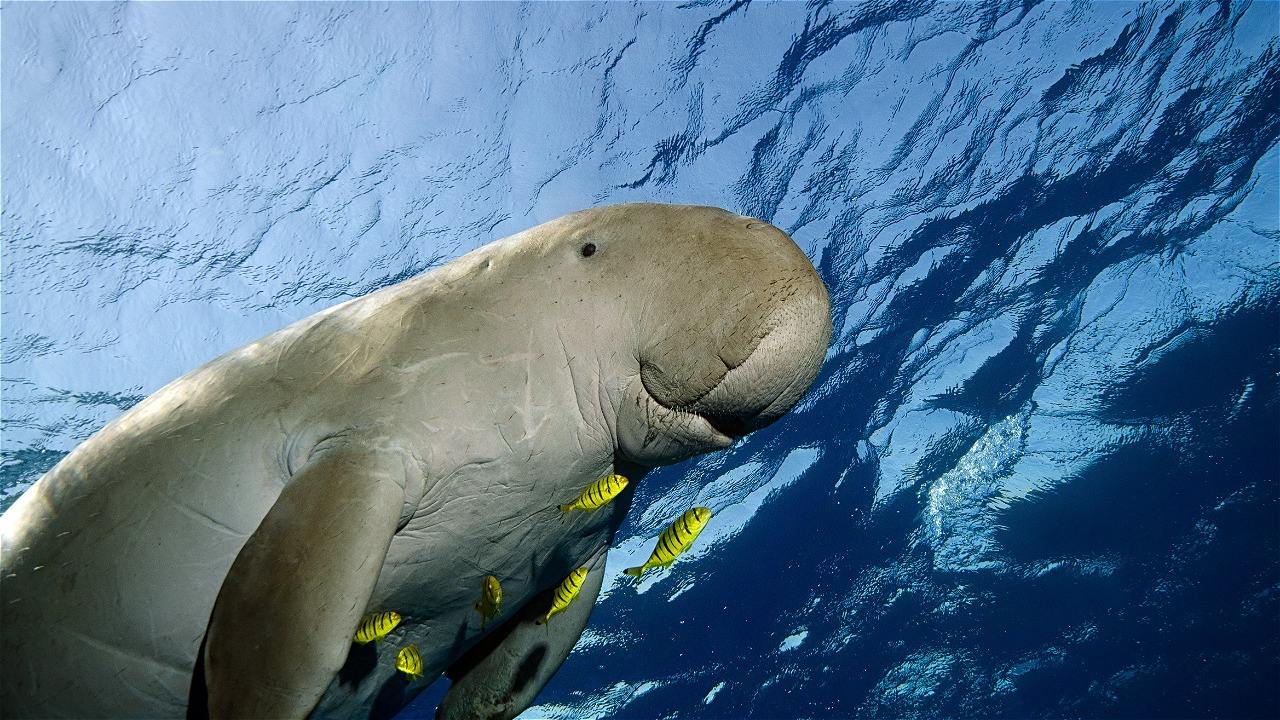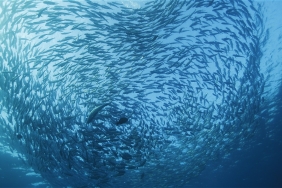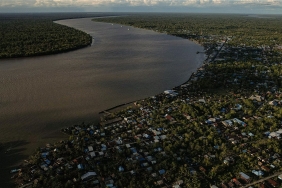IDENTIFY FIVE BEHAVIORS OF DUGONG AT MALI BEACH, ALOR
Dugong, better known as mermaids, have always been associated with mystical or fish-half-man legends. It is sometimes described as a mermaid with a beautiful stature. The legend is actually not entirely a lie, because dugongs do have a natural beauty that is enchanting once we get to know them further.
From its kinship structure, the dugong, which has the scientific name Dugong dugon, is a marine mammal from the Dugongidae family. Dugong is the only species in this family and is still closely related to the Manatee. In fact, it is said that this marine mammal is an evolutionary relative of the elephant.
The body length of dugong can reach 2.4 - 3 meters with body weight ranging from 230 - 908 kg (Skalalis, 2007). Adult dugong will consume large amounts of seagrass around the coast. This species can eat about 25-30 kg of seagrass every day (Azkab, 1998).
However, this is not a problem because seagrass beds can grow relatively quickly and quickly. In fact, with such a large diet, dugongs help control the cover of old seagrasses so as to provide opportunities for young seagrasses to grow and obtain sufficient nutrients and light penetration. Thus, dugongs have an important role as a balancer of seagrass ecosystems like a lawn mower. If not cut regularly, it will disrupt the ecosystem due to competition for nutrients, light and substrate.
From the field observations made by WWF-Indonesia in the waters of Mali Beach, Alor Regency, we can learn the behavior of dugongs that can give you an idea of how dugongs act. Curious about how to meet a dugong?
Dugong Behavior
- Dugongs prefer to live in waters that are protected from human activities and predatory threats from other fish such as sharks. Therefore, bay waters such as Mali Beach in Alor Regency are suitable places for dugongs to survive. In addition, dugongs are usually found in sandy seagrass areas. Seagrass is a favorite food source for dugongs, especially halophila seagrass which has a small shape and rounded leaves.
- Pay attention to tidal conditions. Choose the condition of the sea water when it is in a state of tide. Usually we will easily find dugongs playing in shallow waters. When the tide is low, the dugong will play deeper in the ocean waters.
- Dugong will make a sound as a sign of its appearance. This sound can usually be heard a few moments before the dugong approaches us.
- Recognize the traces left by the dugong. When playing around the beach, dugongs usually do activities such as relaxing or lying on the sand. Dugongs will make movements with their fins to scratch the sand and will leave a kind of trail. This activity is also allegedly in order to find seagrass food attached to the sand substrate.
- Removal of sand from the trail left behind. In carrying out activities on the sand substrate, the dugong will leave a kind of lifting of sand particles in the water column. Then the dugong will move to another place. This sand removal can be used as a sign of the direction in which the dugong is moving when the sea water is not so clear.
Try to recognize the traces left by the dugong when you play to the beach area. Because it turns out that dugongs rarely appear in waters that are crowded with tourists. In addition, its rare appearance is caused by the threat of extinction that dugongs face today. Population numbers are not known with certainty, destructive human activities such as bombing and hunting are the main factors in the destruction of dugong habitat.
Coastal community groups around the location also play a spearhead role in preserving this mammal. They are members of the POKMASWAS (Community Supervisory Group) which is supported by WWF-Indonesia to suppress destructive utilization of marine resources. The Regional Government of Alor Regency in collaboration with WWF-Indonesia also agreed to make the waters around Mali Beach a protection zone in the management of the Pantar Strait Waters Nature Reserve (SAPSP) of Alor Regency. This protection zone is intended to protect the habitat and population of dugong in these waters by limiting nature tourism activities that can disturb dugong habitat.
If excessive human activities continue to occur, it is likely that the dugong will become just a legend or myth. Let's change our behavior towards nature to protect the dugong and its habitat!
Author: Tutus Wijanarko - Community Right Based Management Officer
Reference:
Azkab, M.H. 1998. Dugongs as seagrass eaters. Oseana Volume XXIII, Number 3 & 4, 1998: 35 - 39.P3O-LIPI, Jakarta.
Directorate of KKJI, 2014. Guidelines for Strategic Plan for Conservation of Protected and Endangered Fish Species 2015-2019. Jakarta.
Skalalis, Diana, 2007. Paper: Dugong (Dugong dugon Muller) Conservation Model. Padjajaran University. Yapeka, 2014. Report: Seagrass Growth on the Coast of Bahoi Village.





